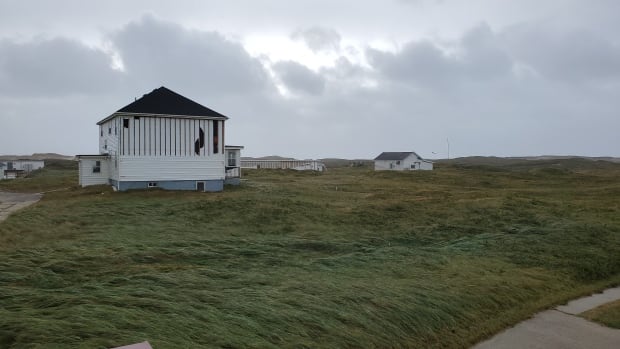A man who endured post-tropical storm Fiona on Sable Island says it was a night he will never forget.
“It’s been a very eye-opening experience and quite a story that I’m probably going to be sharing for the rest of my life,” says Jason Surette, the operations manager for the Sable Island National Park Reserve.
Surette volunteered to fill a staff opening on the island for three weeks — not knowing in advance, of course, that Fiona would soon be bearing down on the small sandbar. Sable Island is located in the Atlantic Ocean about 300 kilometres southeast of Halifax and is just over a kilometre wide at its broadest point.
Winds from the storm peaked in Nova Scotia at 179 km/h in Arisaig, near Antigonish. Final data for Sable Island has not yet been compiled, Surette says.
On Friday afternoon, before the storm, it was “extremely calm,” with just a light breeze, but then winds ramped up quickly around 11 p.m., says Surette.
By 3 a.m., “the house was literally shaking,” he says.
“The floor shook.… It felt like somebody was banging the floor with a mallet, and that was purely because of the wind,” he says.
“The house itself made a lot more creaks and groans and moans than I would have ever expected a house to make. There was a couple of the large bangs and they almost sound like bricks being thrown at the house.… It was pretty impressive, actually, the power of Mother Nature.”
Precious little sleep
Surette was one of four people to remain on Sable Island during Fiona, including two other Parks Canada staff and one researcher. They had a couple of ground rules going into the storm: no one was permitted outside until it was safe, and everyone had to stay away from the windows.
He says everyone swapped stories the next morning, and they all had one similar tale — they only got an hour or two of sleep.
“Just the noise — there is no way, even if you could cancel out the noise, it’s just the vibrations in the house was enough to keep you awake.”

Surette said the researcher, who has spent about 50 years living on the island, told him it was the biggest storm she’d ever encountered.
Some of the buildings on Sable Island lost siding in the wind, and there will be a little roofing repair work needed, but Surette said “generally speaking, we fared well.”
“While we were definitely on the leading trail of the storm, and we certainly felt quite a strong brunt, I feel sorry for the people on the mainland because we didn’t see the storm surge and our structures out here are designed to handle this.”
Horses ‘very robust creatures’
As for the few hundred horses on the island, they likely survived relatively unscathed, he said. Parks Canada staff do not manage the population, and there are rules in place to prevent humans from interacting with the horses or touching them.
Surette said normally the horses find shelter in tall dunes during storms, and by midday Saturday, the horses were out grazing “almost as if nothing happened.”

“Horses here on Sable are very robust creatures. I have no reason to suspect that they sustained any injuries and from what I could see from the bands that hang around [the] main station, they all looked happy and healthy the next day.”
It’s hard to say for sure how Sable Island’s huge grey seal colony spent the storm, but Surette says during previous storms, the seals “play around in the waves almost like a surfer.”
“So I dare say they probably didn’t notice much.”
Surette says he would have gone to Sable even if he’d known Fiona was coming.
“I think a lot of people in Atlantic Canada are going to remember Hurricane Fiona, and to be able to sit back and say not only did I survive, I survived it on Sable Island … definitely one for the books.”


